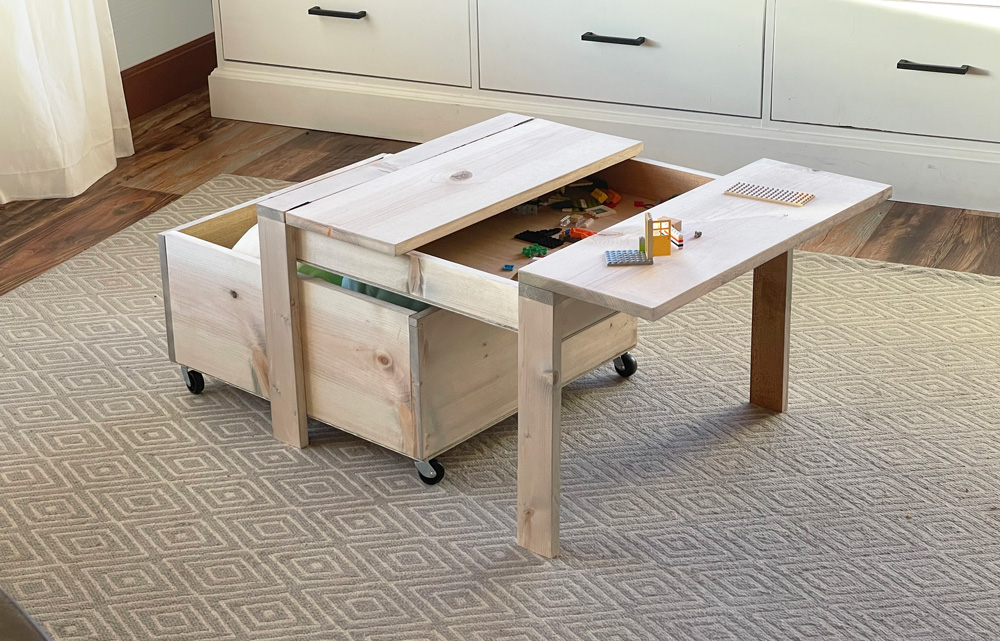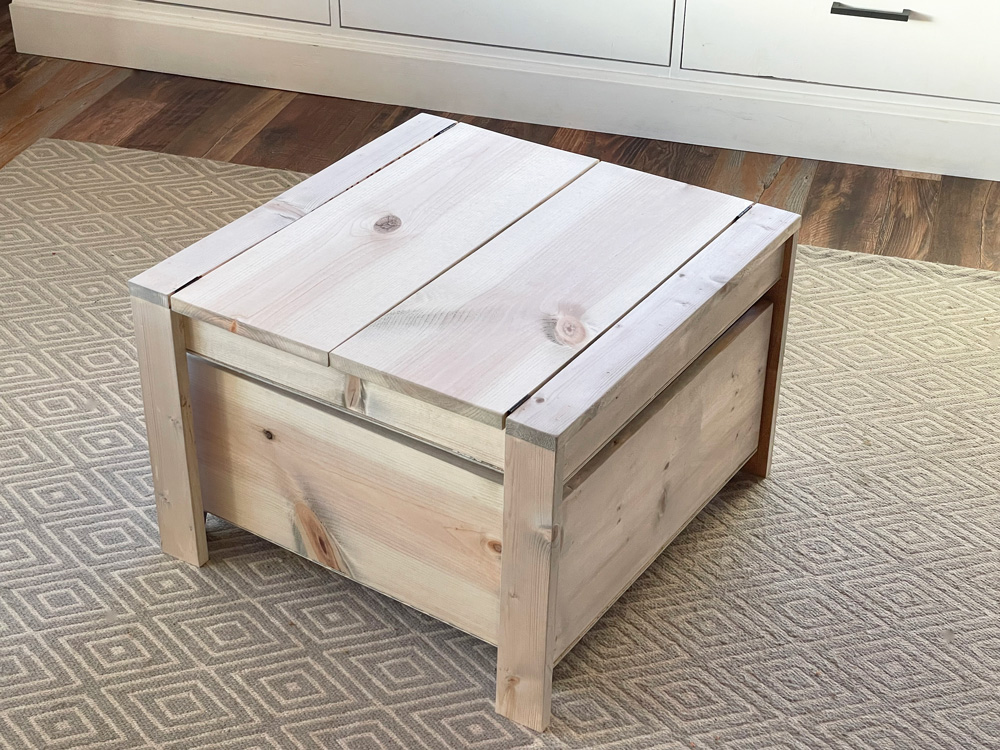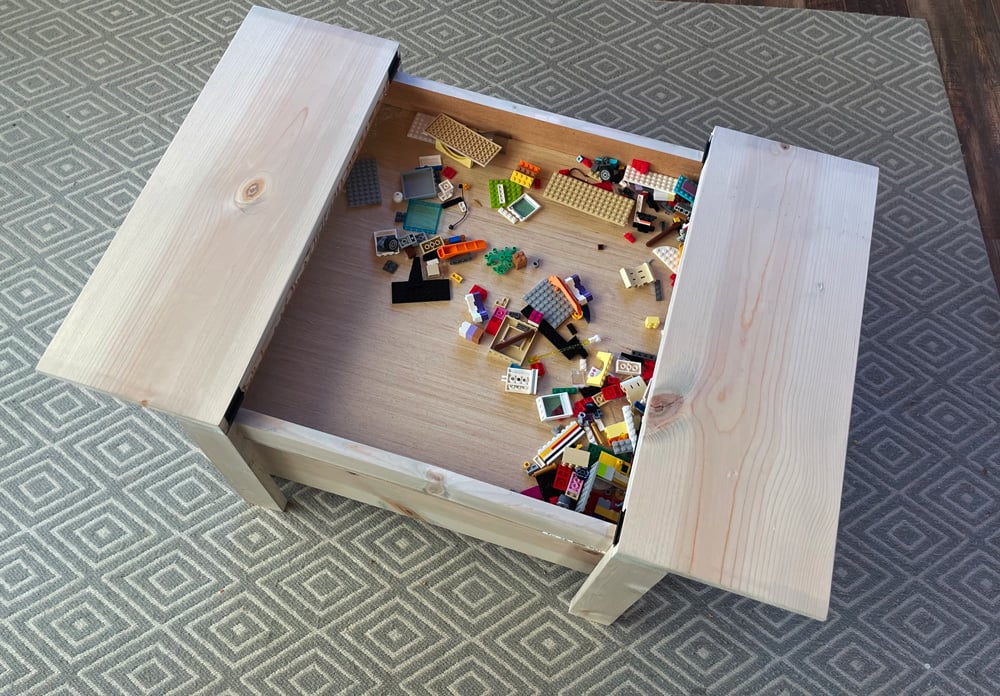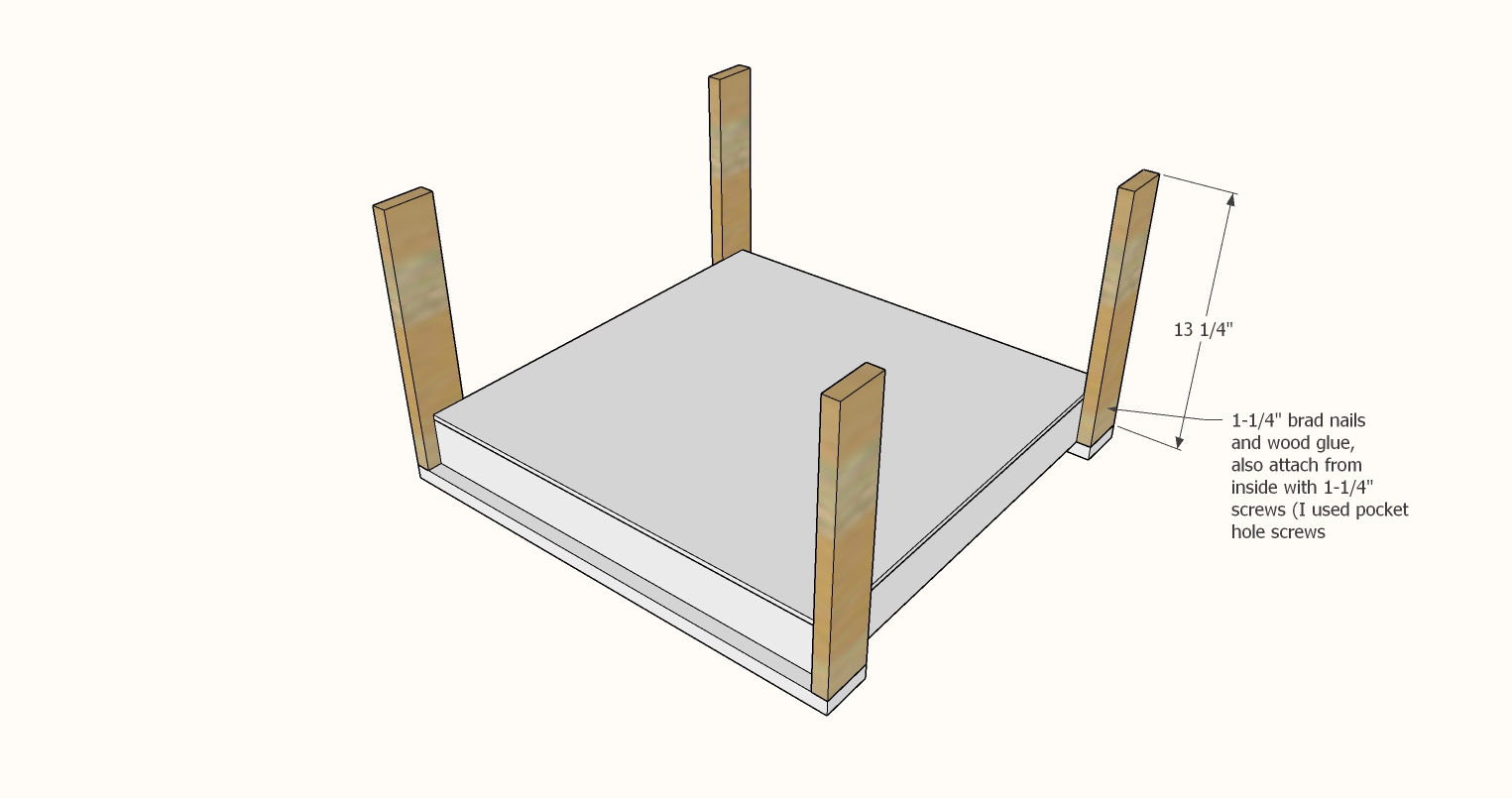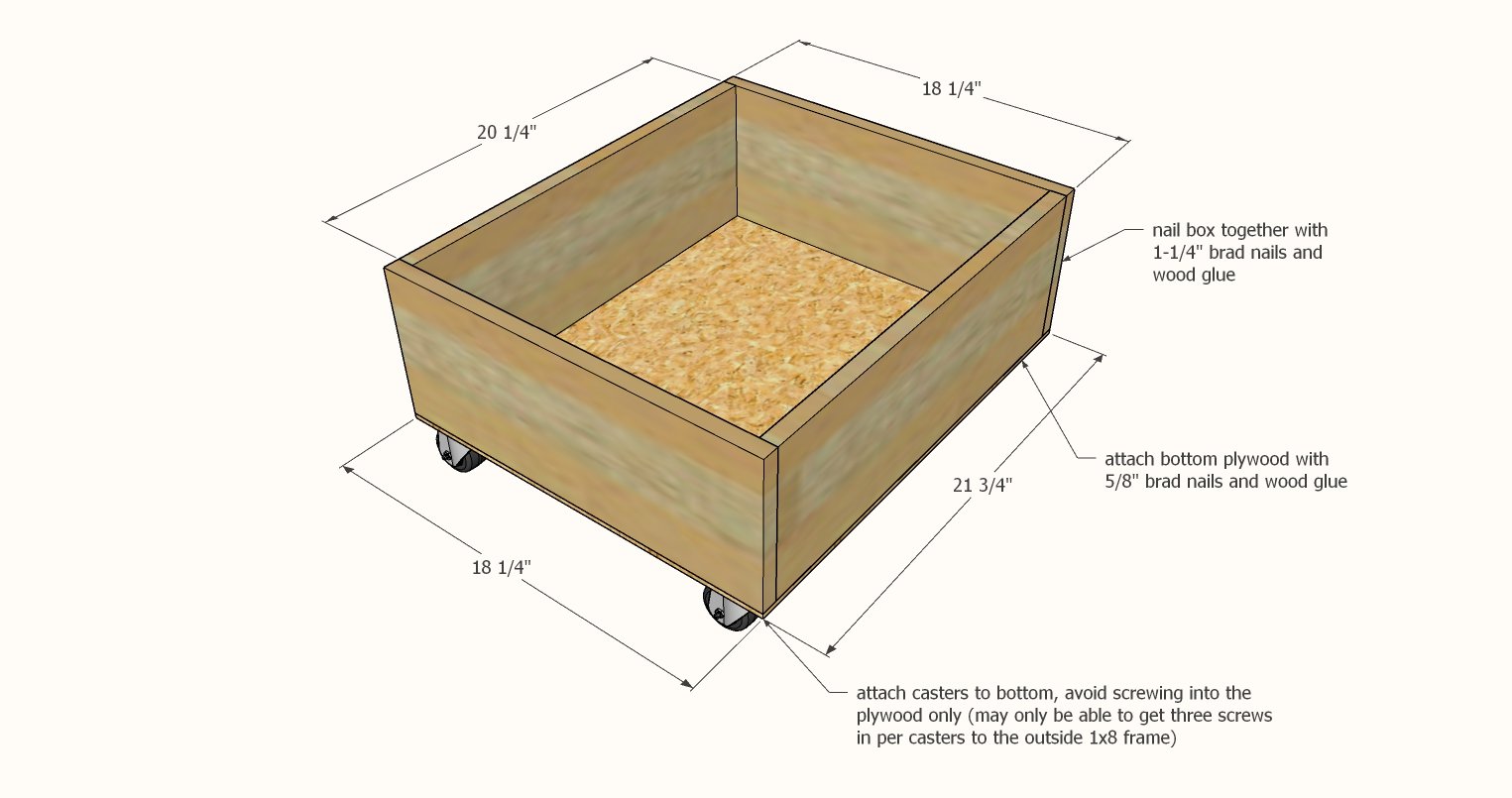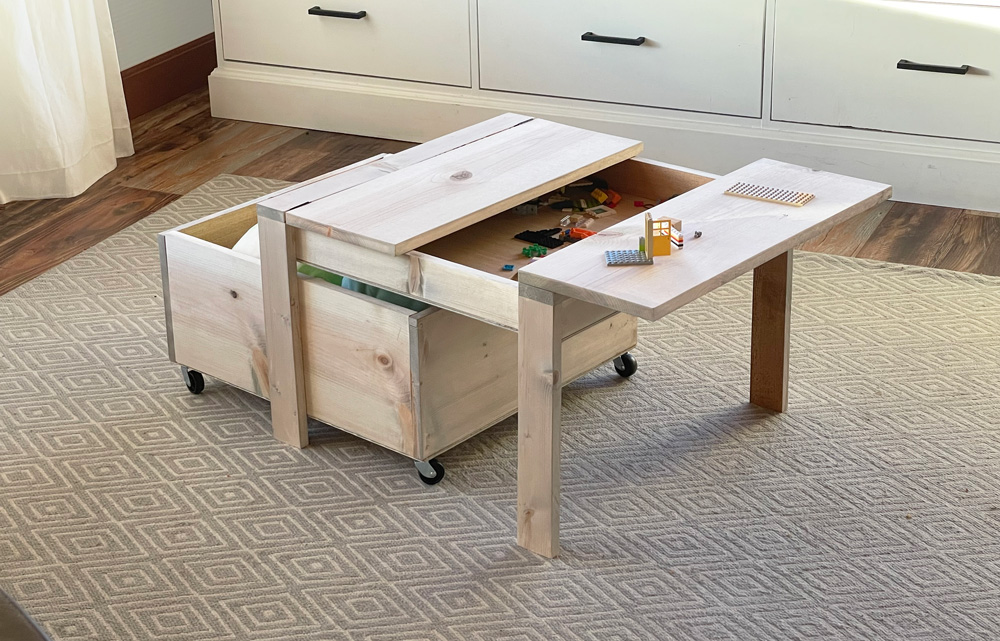
Build a lego table out of pine wood boards! This lego table features fold open top, to create surfaces and expose a large lego storage compartment in the middle. Add a trundle for extra storage, or slide benches underneath. Free DIY Lego Table plans from Ana-White.com - easy build with basic tools includes step by step diagrams, shopping and cut lists, and a build video.
Pin For Later!

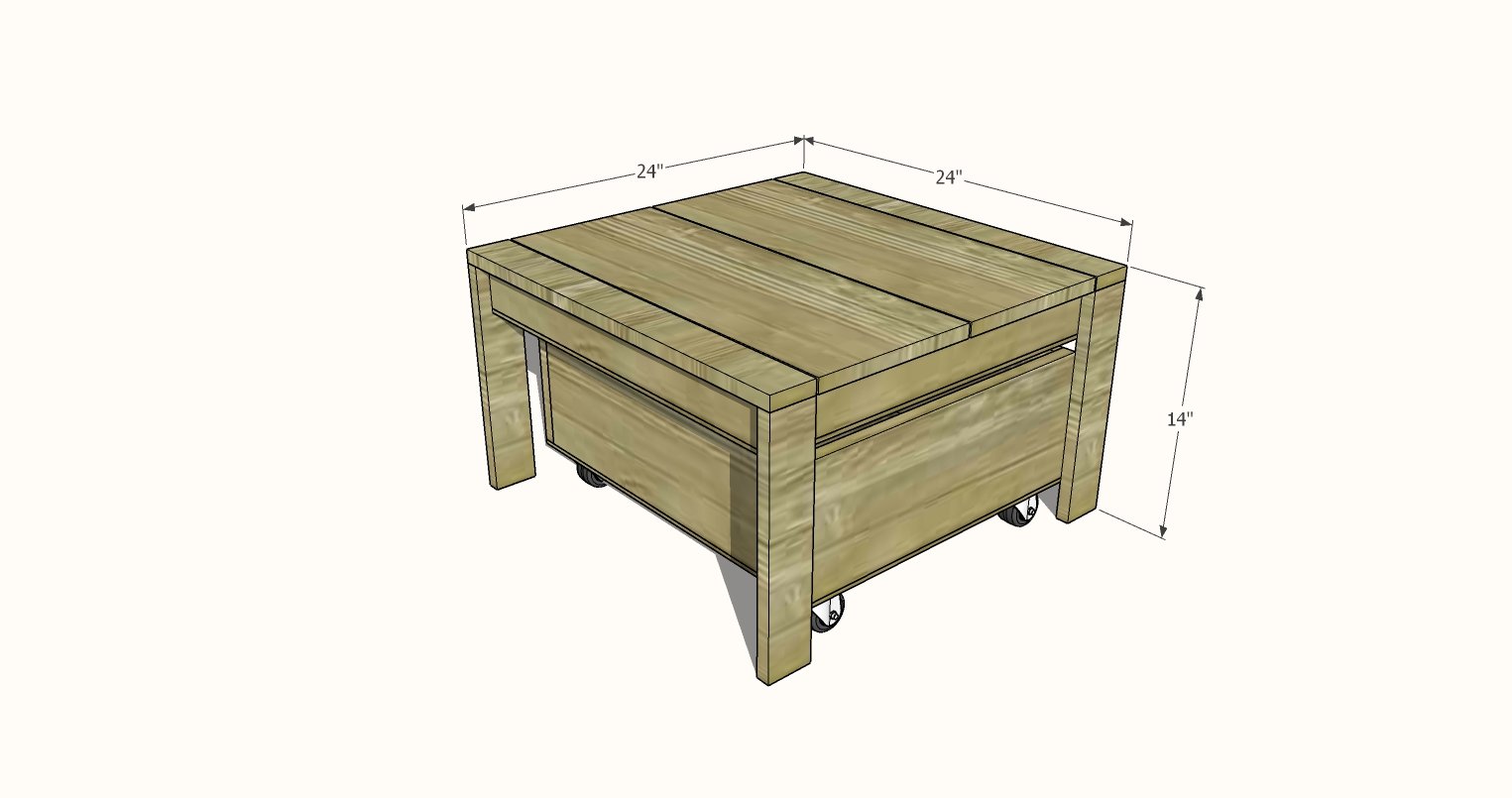
Preparation
Lego Table Only
- 2 - 1x3 @ 8 feet long
- 1 - 1x10 @ 4 feet long
- 1 - 1/4" plywood panel 24" x 48"
- 5/8" and 1-1/4" brad nails
- wood glue
- one set of basic butt hinges, six screws per hinge
- 14 - 1-1/4" long self tapping wood screws (SPAX or similar)
Optional Trundle:
- 1 - 1x8 @ 8 feet long
- scrap plywood from the lego table build
- 4 caster wheels and screws
For lego table only:
- 2 - 1x3 @ 22-1/2"*
- 2 - 1x3 @ 21"
- 1 - 1/4" plywood @ 22-1/2" x 22-1/2"*
- 2 - 1x3 @ 24"*
- 2 - 1x10 @ 24"*
- 4 - 1x3 legs @ 13-1/4" (as shown, can be taller or shorter, depending on desired table height)
For optional storage trundle - trundle can be taller with a wider width board (1x10 or 1x12) if taller legs are used.
- 2 - 1x8 @ 20-1/4"
- 2 - 1x8 @ 18-1/4"
- 1 - 1/4" plywood @ 18-1/4" x 21-3/4"
NOTE: If you are working with a 1x10 board that is exactly 4 feet long (48"), shorten the boards marked with a * by 1/4" so you can fit the two cuts on the 48" long board. The tabletop boards would then work out to 23-3/4".
Instructions
Step 1
Step 2
Place the tabletop boards on top.
Line up so there is gaps in between, you can use the hinges to help space out the gaps. Make sure there is a gap in between the 1x10 boards.
Once satisfied with the gap placement, carefully remove the 1x10 boards.
Use a pencil to trace the placement of the 1x3 boards, as you will need to remove and attach with glue.
Remove the 1x3 boards, apply glue and replace.
IMPORTANT: Make sure there is a 3/4" overhang on the ends of the 1x3s (where legs will go in next step) on both sides. Use a scrap piece of wood to help you.
Nail down with 1-1/4" brad nails.
IMPORTANT: Also attach the 1x3 boards to the top with three 1-1/4" screws per 1x3 - as this is the main attachment point for the entire tabletop.
I then sanded the entire project with 120 grit sandpaper. I smoothed out all the outside edges.
Then I sanded with 150 grit sandpaper.


